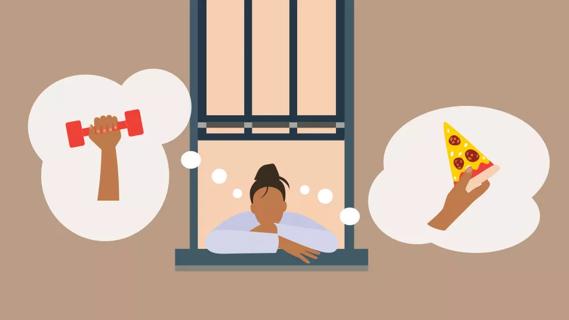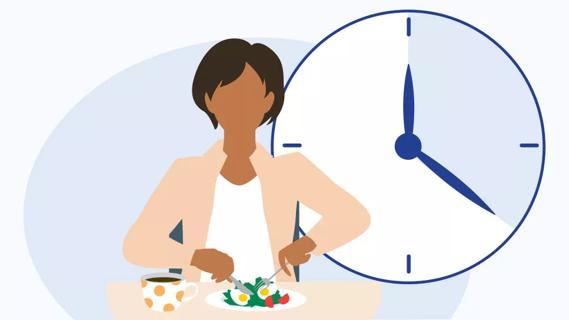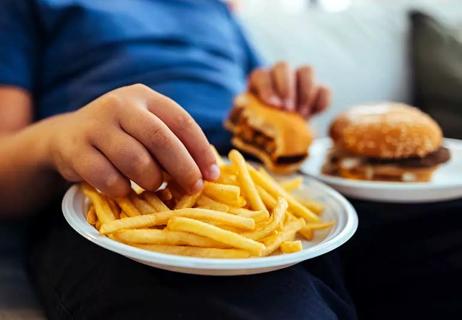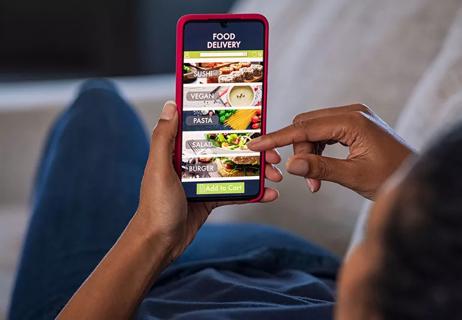It’s often full of sugar, sodium and refined grains

Extra cake from your coworker’s kid’s birthday party. Leftover bagel halves from the morning meeting. If you work in an office, you’ve surely seen how random treats magically appear in the break room or on the free table — and then get quickly devoured, regardless of what they are or where they came from.
Advertisement
Cleveland Clinic is a non-profit academic medical center. Advertising on our site helps support our mission. We do not endorse non-Cleveland Clinic products or services. Policy
Free food has a way of luring you in when you’re not the least bit hungry. And while an occasional indulgence is no problem, habitually visiting the free table can add up to a lot of extra calories and take a toll on your health.
You’re not even a “sweets person,” yet here you are in the office kitchen at 3 p.m. mulling over a box of half-stale donuts. What gives?
“We love anything that’s free or feels like a good deal, and when it’s in a work environment, it can feel like an extra perk, especially if you are feeling underappreciated in any way,” explains psychologist Susan Albers, PsyD.
Plus, many people turn to food for comfort when they’re stressed or bored — either of which you might be feeling at any given moment of your workday. So if there’s something (read: donuts) readily available to soothe you, it’s easy to see how that box disappears so fast.
“Free food is very low risk: It’s already there, it costs you nothing and if you don’t like it, you can just throw it out,” Dr. Albers adds.
Then there’s the social element of eating at the office. Studies show that our eating habits are influenced by those of the people around us — such as other colleagues who also enjoy free food.
Advertisement
“Social eating can be very contagious,” she says.
An occasional indulgence at the office is nothing to feel guilty about. But getting into the habit of taking free food whenever it’s there can derail your healthy eating intentions and leave you dragging through the rest of your workday.
One CDC survey found that foods up for grabs at the office are often high in empty calories from refined grains, solid fats and added sugars. In other words, it’s usually not salad and whole grain muffins you’re snatching up to fuel you through your workday.
“Sugar in particular has a huge impact on our brain and our mood,” Dr. Albers notes. Research has shown that sugar can make us more tired and less focused later in the day. It also contributes to weight gain in the long-term and can up your risk for heart disease and other health conditions.
The easiest way to avoid the temptation of free treats is to keep them out of sight.
“You could not even be thinking about donuts and then you walk into the office break room and suddenly it’s all you can think about,” Dr. Albers relates. “Just seeing the food is a huge trigger for people.”
If you have any control over where the free food goes, choose a place that’s a little out of the way of regular foot traffic. “Putting it out of sight or where people have to work a little bit to go get it will cut down on mindless eating,” Dr. Albers says.
If that’s out of your control, though, Dr. Albers recommends these tactics:
Advertisement
Advertisement
Learn more about our editorial process.
Advertisement

Getting the hang of portions can help you better understand how much to put on your plate

Learning about your relationship with food can help improve your eating behaviors and patterns

Eating mindfully, sipping water and chewing slowly can help your brain catch up with your stomach

Stress, lack of sleep and not eating enough all contribute to sugar hankerings

Being bored, not getting enough sleep and waiting too long to eat can all contribute

Be mindful, like gauging your hunger and reviewing nutritional information

Emotions can power food choices when your favorite team falls short

Turn down the pressure, but don't stop offering

Start having sex about 72 hours before ovulation, then at least every other day during your fertile window

Attachment theory suggests that your earliest relationships shape connections throughout your life

It isn’t a recognized mental health disorder, but research shows that problematic social media use can negatively affect your mental health, self-esteem and sleep